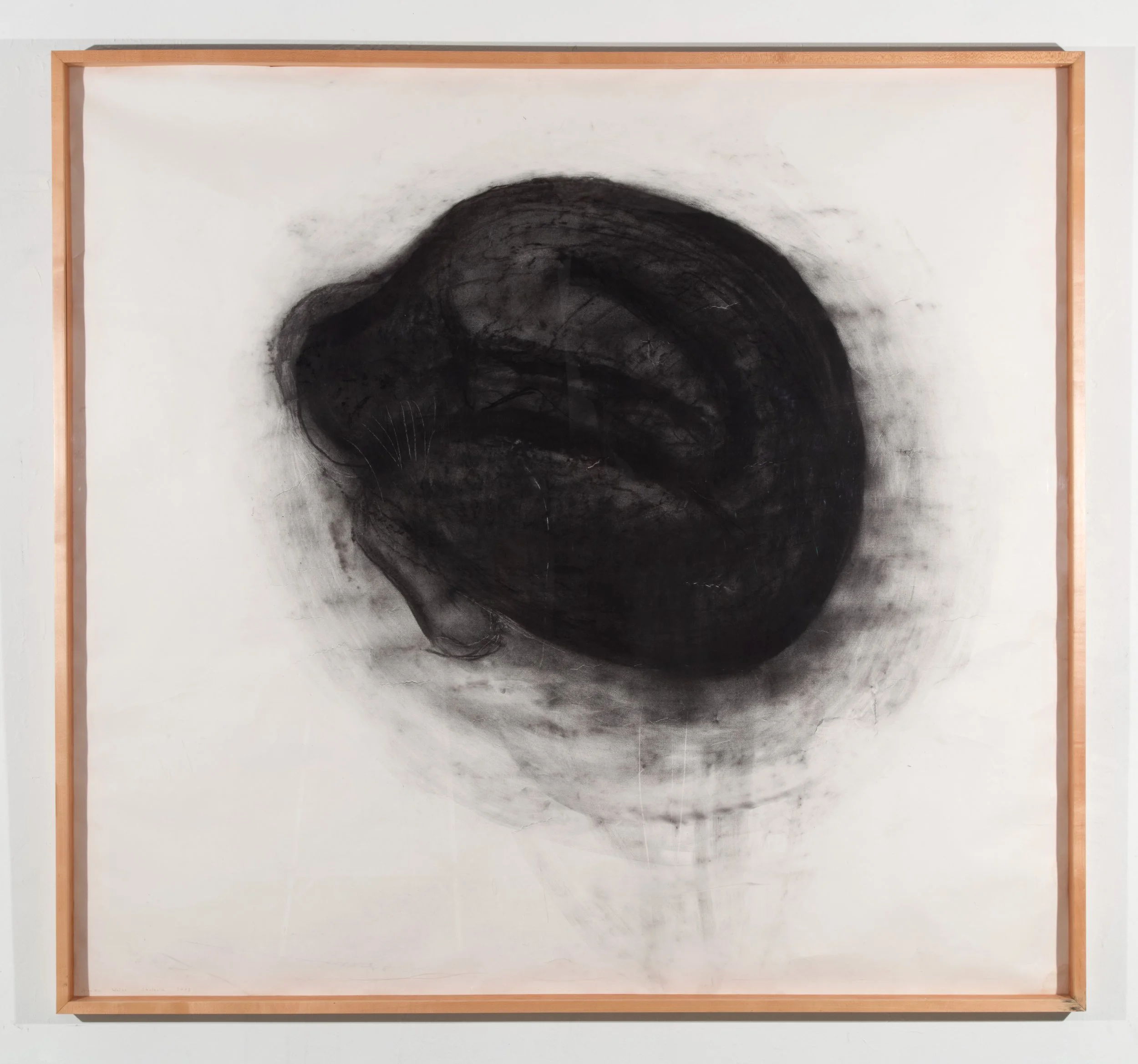Skulenie
Skulenie, 2003
Charcoal on photographic backdrop paper, 52 x 55 inches. Courtesy the artist. Photographic documentation by Jean Vong
SKULENIE
2003-
cycle of drawings made with graphite powder, charcoal, water, pencil on paper, dimensions variable
Exhibited:
Monika Weiss - Vessels, Chelsea Art Museum, New York, curator: Nina Colosi
Monika Weiss - Five Rivers, Lehman Art Gallery, City University of New York, curator: Susan Hoeltzel
Published:
Monika Weiss - Vessels, Chelsea Art Museum, New York, edited by Dina Helal
Monika Weiss - Five Rivers, Lehman Art Gallery, City University of New York, edited by Susan Hoeltzel
Achea Rheon, 2003
Series of 5 drawings, 30 x 22 inches each. In private collections. Photographic documentation by Hermann Feldhaus
Artist Statement
Skulenie in Polish means “to be curled up”. Embryo-like position is a recurring motif in many of my drawings, such as the large-scale charcoal on paper work Skulenie (2003) and the series of 5 charcoal on paper drawings Achea Rheon (2003). The works are depicting the body in various stages of curling up, as if suspended outside of specific time and space.
I made Skulenie (2003) a few weeks after a live performance in my installation Elytron (2003), an indurance-based immersion inside a sculpture filled with a fluid resembling black ink. The drawing became a meditation on the act of being immersed inside the dark substance, charcoal stains reflecting staining of my skin that occurred during the performance. Created the same year, Achea Rheon explores stillness and suspension: the body seems grounded, barely indicated yet moving through space, becoming a stain.
- Monika Weiss
Essay Excerpt
The five large charcoal drawings Achea Rheon (Rivers of Sorrow), 2003 were included in the 2004 Vessels exhibition and thus, relate to a wider body of work. Their shared formal qualities, however, allow them to be seen as independent works as they were intended. Four of the bodily forms appear in a state of restless flux, emerging, folding and struggling before vanishing back into the energy that initially enabled their passage. The technique reveals the artist’s dexterity and facility in which the charcoal is applied to achieve the lightest of marks to support the densely worked opaque areas. The middle drawing is counterpoint to those that flank it and embodies the moment of complete absorption where the figuration hovers between dissolution and emergence, before setting off on a path that is more recognizable. Framed and evenly spaced on the wall, this group demonstrates the artist’s trust in the efficacy of the medium to propel what motivates the works: the articulation of movement and trans- formation, the antithesis of stasis. There are clear connections between Achea Rheon and the works described earlier where the body as conduit articulates marks. With Achea Rheon, performativity emerges at a remove, solely through drawing that is meditated and has ulterior purpose.
- Mark McDonald, curator, The Metropolitan Museum of Art, Drawing Consciousness: Monika Weiss in Monika Weiss-Nirbhaya, Centre of Polish Sculpture in Orońsko, 2021, pp. 54 - 76 [to read the essay click here]
Monika Weiss - Five Rivers, Lehman College Art Gallery, Bronx, New York, 2005-2006. Photographic documentation by Hermann Feldhaus
Monika Weiss - Five Rivers, Lehman College Art Gallery, Bronx, New York, 2005-2006. View of a live performance inside Rivers of Lamentation (2005) with countertenor Anthony Roth Constanzo and the artist. Photographic documentation by Hermann Feldhaus
Monika Weiss - Vessels, Chelsea Art Museum, New York, 2004. Photographic documentation by Hermann Feldhaus




